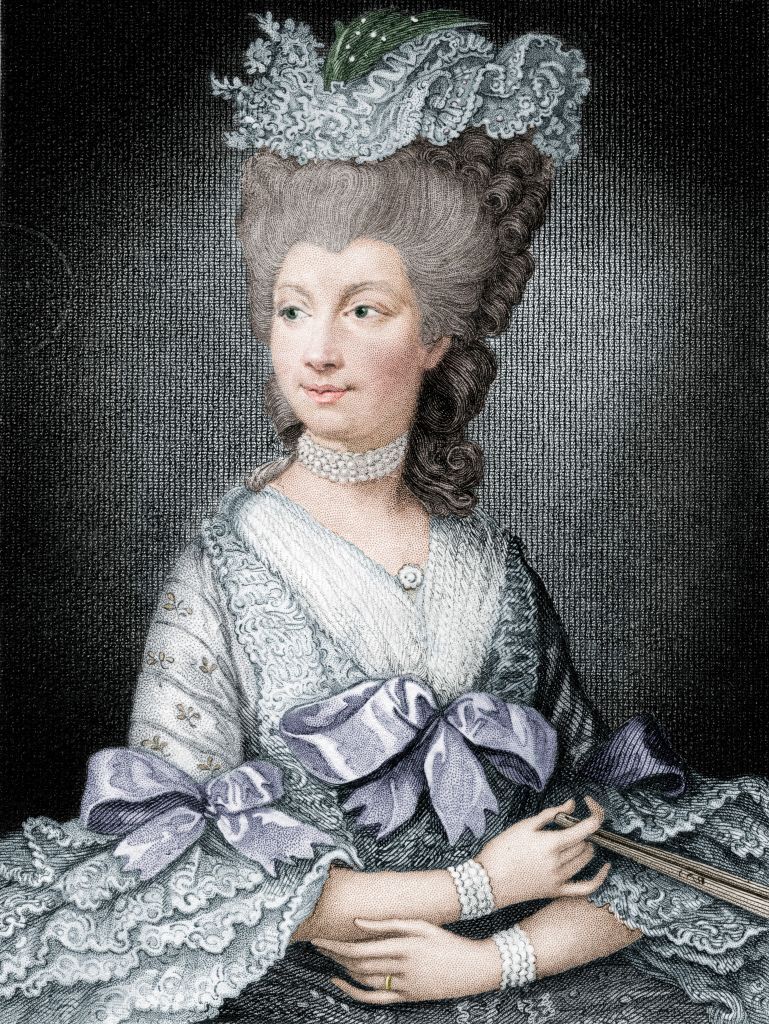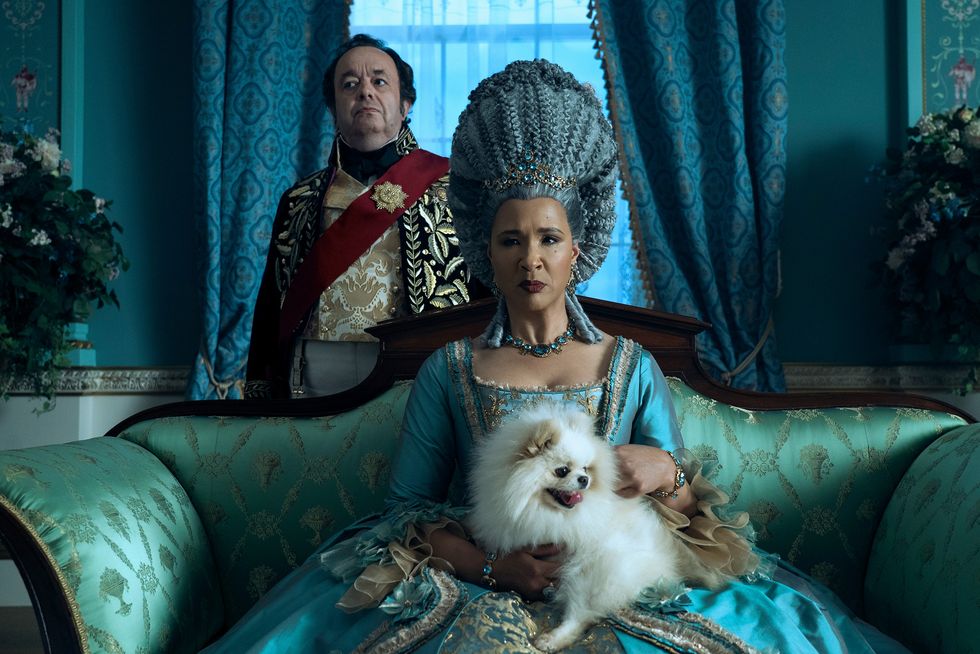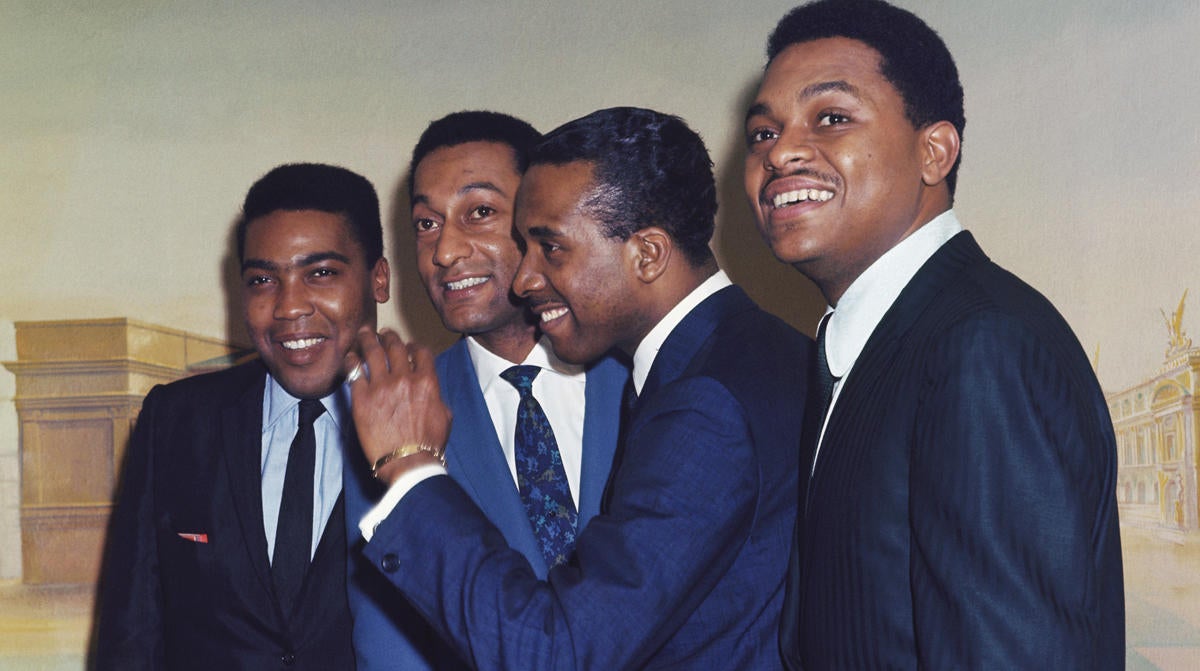The True Story of Queen Charlotte
Minor spoilers below.
Modern audiences fell in love with the regency era when the Shonda Rhimes-produced royal romance series Bridgerton premiered on Netflix in 2020. While the series has largely focused on the titular Bridgerton family and their various romances, it’s the commandeering Queen Charlotte, played by Golda Rosheuvel, who is getting her own spin-off prequel.
The new Netflix miniseries Queen Charlotte: A Bridgerton Story chronicles the life of the monarch, played in adolescence by India Amarteifio, as she reluctantly marries King George III and later rises to power.
But unlike the original series which is largely an act of fiction, Queen Charlotte has some footing in reality—she and husband King George III were real royal figures in British history during the 18th century. If you’re curious just how much of the new series is pulled from real life, read on.
Queen Charlotte was much less headstrong in real life.
In the Netflix spin-off, our introduction to a young Queen Charlotte is in a stagecoach on the way to meet the man that would become her future husband, and Charlotte is unhappy with the whole ordeal. Charlotte’s brother is handling her courtship due to the passing of her parents, and the future queen is putting her foot down about someone else deciding her future. She opposes the arranged marriage so much that Charlotte even attempts to run away right before the wedding. She is caught by the charming King George, whom she is immediately smitten with as he sweet-talks her and convinces her to stay.
In real life, Charlotte of Mecklenburg-Strelitz was short-listed as a possible wife for the new king based solely on her pleasant and “sweet-tempered” personality—a far cry from the depiction we see in the Bridgerton spin-off. The couple was married in 1761, just six hours after their first meeting. She had a reportedly sheltered upbringing with a subpar education and a distance from royal life, despite being born in proximity to royalty (her father and brother were German dukes and her mother a princess). Upon first meeting King George III, it is believed that she threw herself at his feet as a show of deference and nerves.
Their marriage produced many children and possible heirs.
When Rosheuval appears in the Netflix spin-off, she’s ushering her brood of bratty children into a room to lecture them about providing her a worthy heir. Her biggest plight is that none of her sons have produced a legitimate heir, choosing instead to sleep around and have illicit affairs.
In real life, she birthed 15 children with her husband King George III—including the future heir King George IV. But the fictional Charlotte’s concerns are likely real: the future king led an extravagant life and failed to produce an heir for the throne (his brother William IV eventually succeeded him).
Thirteen of Charlotte and George’s children lived to adulthood, while two died from smallpox. Their deaths affected the queen, who “cried vastly” in the aftermath according to her son’s nanny. Being pregnant for such long stretches of her life also took a toll on the young queen. According to Janice Hadlow’s biography The Strangest Family: The Private Lives of George III, Queen Charlotte and Havarians, Charlotte wrote, “I don’t think a prisoner could wish more ardently for his liberty than I wish to be rid of my burden and see the end of my campaign. I would be happy if I knew this was the last time,” while pregnant with her 14th child, Prince Albert.
Queen Charlotte may have had Black ancestors.
Bridgerton made headlines by casting Black actors in royal positions, including Rosheuvel (who is of Guyanese descent) as the queen. That casting—and that of half-Ghanaian Amarteifio in Queen Charlotte—may not have been far from the truth. According to History Extra and historian Mario De Valdes y Cocom, Charlotte “may have been England’s first (and so far, only) queen of African heritage.” Her genealogy is believed to date back to a Black Portuguese noblewoman from the 15th century, Margarita de Castro y Sousa. Valdes’s research points to her doctor’s notes, which “occasionally used racially pejorative terms to describe her features” and portraits in which her skin tone is darker than is custom for that time period.
Valdes’s claims are not without their detractors: some find that the amount of time (nine generations worth) between the two women washes away any connection, while others believe that Valdes was incorrect about Margarita’s ethnicity altogether.
Queen Charlotte was actually addicted to “snuff.”
In Bridgerton, the queen can often be found openly snorting a powdered substance during her meetings with her court. That wasn’t pure comedy; the real queen allegedly had an entire room at Windsor Castle allocated for her snuff and is said to have accumulated 90 snuff boxes by the time of her death. It’s no surprise she also earned the nickname “Snuffy Charlotte” from her addiction.
Her husband King George III did suffer a debilitating illness.
At the end of season 2 of Bridgerton, fans finally gained insight into the king’s whereabouts, as he had been notably absent on the series to date. When he makes his debut, the king seems to be suffering a long illness, appearing confused and irritable. The Queen Charlotte prequel also hints at a mysterious illness when the young king collapses in severe pain at the end of the second episode. The miniseries goes on to explore George’s mental health struggles as the story unfolds.
The series isn’t too far off from reality: King George III began publicly showing symptoms of mental illness in 1788, though he reportedly had his first private bout of illness in 1765, which was kept a secret from Charlotte. Historians have since speculated that he suffered from porphyria, a blood disorder that affects the nervous system.
Upon its reemergence in 1788, their once affectionate marriage turned sinister as George was often violent towards his wife while also falsely accusing her of adultery. George went so far as to physically assault his son, the Prince of Wales, before he was put in a straightjacket. Charlotte often hid from him despite being his guardian and with the king unfit to rule, she was forced to tend to political dealings. Charlotte initially didn’t allow her son to take the throne during George’s illness, leading to a years-long estrangement with him.
Charlotte cared for George, whose illness robbed him of his memory, until her death in 1818. George died a year later and the two were laid to rest beside each other.
Radhika Menon is a freelance entertainment writer, with a focus on TV and film. Her writing can be found on Vulture, Teen Vogue, Bustle, and more.








